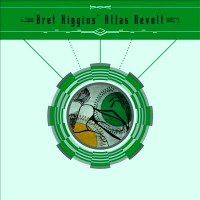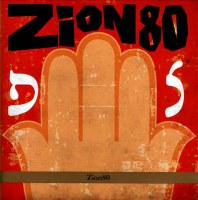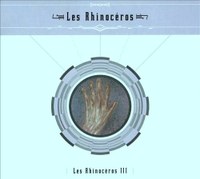1.11.2015
| Kedy |
01. 11. 2015 od 19:00 do 22:00 |
|---|---|
| Kde | klub |
| Vstupné |
za členské |
| Autor | Tomáš Molnár |
3 x TZADIK
Bret Higgins´ : Atlas Revolt
 The eponymous debut from Toronto-based bassist Bret Higgins' Atlas Revolt is a tough one to pin down and an easy one to get pleasantly lost in.
The eponymous debut from Toronto-based bassist Bret Higgins' Atlas Revolt is a tough one to pin down and an easy one to get pleasantly lost in.
Higgins regularly walks through different musical worlds, working with the folk-rock outfit Great Lake Swimmers, the Balkan-klezmer band Beyond The Pale, the folk-ish Ozere, and the trippy avant-klezmer jam band known as Zebrina, so it should come as no surprise that his own music pulls from so many different places. He readily blends Eastern European influences, rock grooves, psychotropic sounds, and klezmer-ish melodies, alternately creating grooving numbers and sweeping, cinematic pieces in the process.
Right off the bat, Higgins walks the klezmer-rock path with the title track. But that doesn't last. He shifts gears from there, turning into a musical nomad who wanders Spanish hills while caravanning with the Romany ("El Metate"). Then he promptly changes directions twice by creating something that sounds like it was pulled from an Ennio Morricone score for a Spaghetti Western ("All About The Starry Sky") and delivering an amped up semi-raver ("Zagazig"). In those first four pieces, Higgins' love of variety is laid out for all to hear.
While Higgins liberally mixes styles and sounds in these original compositions, all of this music manages to speak the same language. That's due, in large part, to these musicians. Each member of this ensemble has a role to play, and each plays it to perfection. Higgins is all about stability, laying foundation down below his bandmates as they spread far and wide; guitarist Tom Juhas brings an edge to this music and he pairs well with violinist Aleksandar Gajic, an intriguing player who builds distinctive melodic lines with Hebraic underpinnings; drummer Joshua Van Tassel is often right there with Higgins, playing straight rock beats behind the band, but he also knows how to pull back and work with tom-based minimalism when Higgins is looking to create something more open; and keyboardistRobbie Grunwald is a utility man, embroidering the music with unique sounds, tempering extreme thoughts from other band members, and providing colorful solo work.
It's no surprise that a project like this should end up on John Zorn's Tzadik imprint. Bret Higgins' Atlas Revolt is a boundary-pushing jazz-rock-klezmer hybrid that should fit right in on that label.
Track Listing: Atlas Revolt; El Metate; All About The Starry Dark; Zagazig; Electric Sinner; Sanan; Meat For Dogs; Flashbulb Memories; Vorticism; Jakaranda.
Personnel: Bret Higgins: bass; Aleksandar Gajic: violin; Robbie Grunwald: keyboards; Tom Juhas: electric guitar; Joshua Van Tassel: drums.
Jon Madof : Zion80

As Jon Madof worked at his computer one Friday in 2011, doing the graphic-design job that supported his life as a guitarist, he listened to the Afrobeat music of Fela Anikulapo-Kuti. Then, with the Sabbath sundown nearing, he shut down his home office and began humming one of the Jewish religious songs made famous by Rabbi Shlomo Carlebach.
The mental mash-up of Fela and Carlebach continued through the next day, as Mr. Madof found himself weirdly hearing the rabbi’s version of “Ein Keloheinu” with the Nigerian musician’s polyrhythmic beats. When the Sabbath ended and Mr. Madof, an Orthodox Jew, could use electricity again, he went online with one question about the unlikely hybrid: “Did anyone ever do this before?”
Satisfied that nobody had, Mr. Madof set about filling a musical vacuum only he seemed to recognize. Now, two years later, his 13-piece band, Zion80, named in homage to Fela’s ensembles Afrika 70 and Egypt 80, has released its first, eponymous CD and will be performing on Thursday at Joe’s Pub before doing summer shows in Poland and Austria.
These events come after a year of gigs at the Stone, City Winery and Le Poisson Rouge, with the band drawing curious though admiring coverage on public radio and in the Jewish media.
“On the surface, this hardly seems like a recipe for great success,” Alexander Gelfand, a critic and musicologist, wrote last year in The Jewish Daily Forward. “But as it turns out, anything sounds good recast as Afrobeat, especially when played by a band assembled from the Downtown and Jewish elite.” The combination may not be quite as peculiar as it seems. Musically, Fela and Carlebach arose from entirely different streams. Fela, who died in 1997 at 58, cross-pollinated jazz horns, Yoruba drumming and James Brown funk. Carlebach (1925-94) reinterpreted Jewish liturgical music and Hasidic melodies through the prism of Dylan-style folk singing. Temperamentally, though, the men shared a visionary desire for social change. Fela was the leading dissident against Nigeria’s military governments of the 1970s and ’80s, and for periods of time lived in a commune he called the Kalakuta Republic. Carlebach’s composition “Am Yisroel Chai” (“The People of Israel Live”) served as the anthem of the cold war movement to liberate Soviet Jewry. For more than a decade beginning in the hippie era, Carlebach presided over a synagogue-cum-commune in Haight-Ashbury called the House of Love and Prayer. “Shlomo and Fela were coming from a similar approach,” Mr. Madof said. “They each saw particularism as a path to utopian idealism. Not opposed to each other, but on a path to each other. And that attitude spoke to me.” Mr. Madof had grown up in Philadelphia as a secular Jew listening to his parents’ folk music, then rock, then punk. He majored in Japanese studies at Oberlin and hung around the college’s jazz classes. So he was as startled to discover Carlebach’s music as he was Fela’s. As Mr. Madof turned to Orthodox Judaism in the early 2000s, he also became part of the community of young Jewish musicians, many of them religiously observant, who gathered around the saxophonist John Zorn and recorded on his Tzadik label. Mr. Madof’s process of developing Zion80 — both the band and the CD — started with assiduous listening to Fela’s music, particularly a series of 1970s albums rereleased by the Knitting Factory. With the help of a drummer from Antibalas, an Afrobeat group based in Brooklyn, Mr. Madof started to script out rhythm patterns. He arranged several Carlebach songs for his trio and immediately realized he needed horns. Among the players he attracted were two mainstays from the Tzadik scene, the trumpeter Frank London and the saxophonist Greg Wall, who is also a rabbi. With Mr. Zorn’s patronage, the nascent Zion80 received a residency at the Stone, allowing it to rehearse and perform every Monday night for three months last summer. Out of those sessions came most of the charts for the nine cuts on the album. So did a truly soulful experience.
Les Rhinoceros : III

Let’s imagine that around the turn of the 20th century, several Eastern European Jewish clans seeking a safe haven from the escalating struggles that would lead to World War I wound up emigrating to Jamaica. Finding hospitality in the country, they decided to stick around, eventually building a synagogue to pass on their traditions to ensuing generations. Let’s imagine that way down the line, those descendants picked up on the jubilant pulse of klezmer, and became subversively determined to meld it with reggae.
The three guys in experimental rock group Les Rhinocéros have basically done that—except to an even more batshit extent. On its sophomore album, Les Rhinocéros II, the D.C. ensemble marries klezmer’s sturdy, carnival-like melodies with reggae’s slow and offbeat structures in a way that seems so natural it’s easy to picture these guys cutting Hebrew school to browse reggae tapes at a market in Kingston. But there’s a lot more to Les Rhinocéros II than a naked combination of those two styles of music: It ropes in a heady blend of acid-streaked Middle Eastern guitar, knotty math-rock arrangements, stuttering electronics, melancholic free jazz, somber new classical strings, monotone spoken word, and resplendent noise.
Les Rhinocéros best utilizes those disparate ideas on the album’s second track, “Bea Spiders.” On that song, a hailstorm of heavy riffs serves as a bridge to lumbering prog rock, four-on-the-floor cowbell à la The Rapture’s “House of Jealous Lovers,” and the group’s inescapable and funky mix of skankin’ guitars and bouncy klezmer melodies played on what sounds like a ballpark organ. Compared to the rest of the largely restrained and nuanced record, “Bea Spiders” is the album’s Power Stroke.
But after “Bea Spiders”—and the snaky opening tune “Echidna,” which paints a gauzy image of a glimmering heat mirage in a sun-drenched desert—Les Rhinocéros pulls back and focuses on subtle, quiet, and detailed interplay. “Seepy Seepy” features rustling percussion and light guitar strumming that’s occasionally so inaudible it’s overwhelmed by a hand-shaker. But it’s an important step toward the album’s brassy, wavy climax that sounds all the more powerful in contrast.
Tracks like “What Do YOU Know About VELCRO,” with its hazy, shambolic riddim, and the electronic-infused North African folk at the heart of “Part Too,” lend the album a calm and slightly off-kilter atmosphere. But that’s set aside for the closer “Only Barbarians Use Forks…,” which thrives on the same manic energy, knotty and whimsical kick, and anything-goes vibe as “Bea Spiders.” The song’s heavy breakdowns and instrumental quirks (sharp guitars, a transitioning reggaeton beat, and, um, counting) bookend an otherwise serene album with klezmer-style jams—like a deranged DJ hijacking Shabbat dinner. Well, almost.
